 Search by Keyword
|
“THE BEATLES’ SECOND ALBUM”
(ST 2080)
Released April 10th, 1964
Capitol Records had truly stumbled upon a goldmine. ‘Fumbled’ may be a more appropriate term because of their passing up on the opportunity to release The Beatles records throughout most of 1963. But once they recognized the phenomenal record-selling potential of these four young men from Liverpool, they didn’t hesitate to make up for lost time.
Origin Of The Album
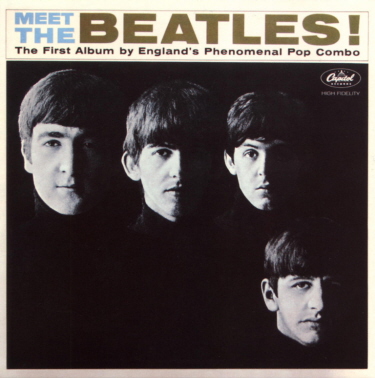 This American record label was actually in a most enviable position. While British Beatles fans had to wait precisely nine months between their first and second albums, American fans didn’t even have to wait for three months. The reason for this was the backlog of Beatles material that was waiting to be released in the states. So, in early March of 1964, while the first Capitol album “Meet The Beatles!” was enjoying its stay at #1 on the Billboard album chart and had already sold nearly three million copies, Capitol Records, with dollar signs in their eyes, was already preparing their next album which would bring to rabid American Beatles fans another batch of songs that British fans had already received. This American record label was actually in a most enviable position. While British Beatles fans had to wait precisely nine months between their first and second albums, American fans didn’t even have to wait for three months. The reason for this was the backlog of Beatles material that was waiting to be released in the states. So, in early March of 1964, while the first Capitol album “Meet The Beatles!” was enjoying its stay at #1 on the Billboard album chart and had already sold nearly three million copies, Capitol Records, with dollar signs in their eyes, was already preparing their next album which would bring to rabid American Beatles fans another batch of songs that British fans had already received.
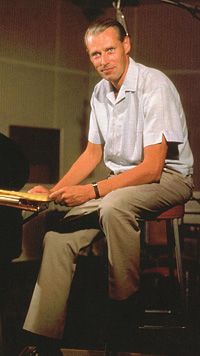 The backlog of Beatles material that Capitol had at its disposal was not only due to there being a year and a half's worth of recorded material The Beatles had produced. It also had to do with the stark difference in how British and American albums were usually configured. British albums most generally didn’t contain the tracks released on singles, where American albums normally did contain tracks used on singles, the record companies realizing that "hit singles sell albums." EMI also felt that British Beatles albums should contain 14 tracks if possible, a standard that was not necessarily held to by other British groups at the time. Nonetheless, producer George Martin strived to hold to this criteria, a standard that other countries did not subscribe to. The backlog of Beatles material that Capitol had at its disposal was not only due to there being a year and a half's worth of recorded material The Beatles had produced. It also had to do with the stark difference in how British and American albums were usually configured. British albums most generally didn’t contain the tracks released on singles, where American albums normally did contain tracks used on singles, the record companies realizing that "hit singles sell albums." EMI also felt that British Beatles albums should contain 14 tracks if possible, a standard that was not necessarily held to by other British groups at the time. Nonetheless, producer George Martin strived to hold to this criteria, a standard that other countries did not subscribe to.
We also must remember that Capito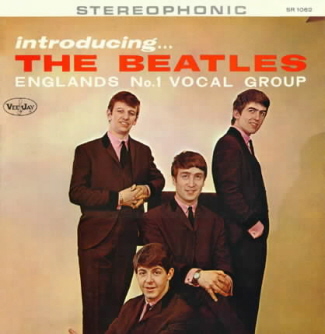 l did not issue the majority of the songs that were contained on the recently released Vee-Jay “Introducing…The Beatles” album. Both of these record labels were currently involved in multiple lawsuits in order to establish which of them owned the legal right to release these recordings, which encompassed the first British Beatles album entitled “Please Please Me.” Capitol, at this point, understandably chose to stay away from the recordings that Vee-Jay had included on their album, although they did include the Vee-Jay owned “Thank You Girl” for which they had to pay a small fee (2 cents per album sold) to Vee-Jay for issuing it on this second Capitol album. l did not issue the majority of the songs that were contained on the recently released Vee-Jay “Introducing…The Beatles” album. Both of these record labels were currently involved in multiple lawsuits in order to establish which of them owned the legal right to release these recordings, which encompassed the first British Beatles album entitled “Please Please Me.” Capitol, at this point, understandably chose to stay away from the recordings that Vee-Jay had included on their album, although they did include the Vee-Jay owned “Thank You Girl” for which they had to pay a small fee (2 cents per album sold) to Vee-Jay for issuing it on this second Capitol album.
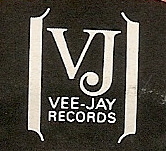 One thing that Capitol Records made no mistake about ‘capitalizing’ on was the fact that they were the American record label that was truly bringing The Beatles to the American record-buying public. They were the legitimate deal, and they were happy to be the label that would continue to bring the Beatles music to American fans forever into the future. This fact was drilled into our heads even by the title Capitol chose for the album. “Introducing…The Beatles” on Vee-Jay Records may have truly been the first American Beatles album (which was currently enjoying its long ride at #2 on the Billboard album chart) but, as far as Capitol wanted us to know, “Meet The Beatles!” was truly the first Beatles album in the US. Therefore, the third Beatles album available for purchase in America was effectively titled “The Beatles’ Second Album.” One thing that Capitol Records made no mistake about ‘capitalizing’ on was the fact that they were the American record label that was truly bringing The Beatles to the American record-buying public. They were the legitimate deal, and they were happy to be the label that would continue to bring the Beatles music to American fans forever into the future. This fact was drilled into our heads even by the title Capitol chose for the album. “Introducing…The Beatles” on Vee-Jay Records may have truly been the first American Beatles album (which was currently enjoying its long ride at #2 on the Billboard album chart) but, as far as Capitol wanted us to know, “Meet The Beatles!” was truly the first Beatles album in the US. Therefore, the third Beatles album available for purchase in America was effectively titled “The Beatles’ Second Album.”
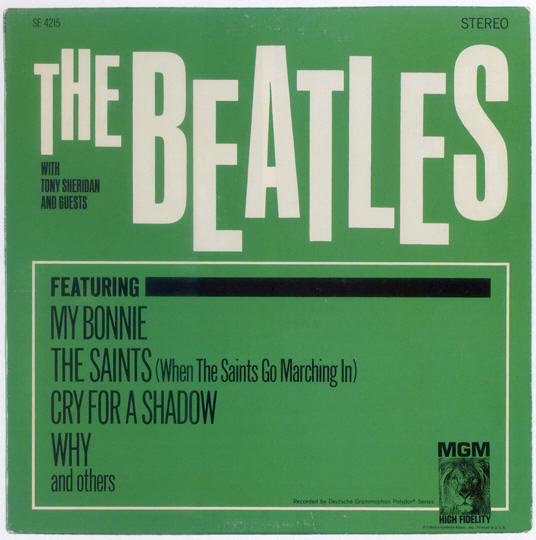 This subliminal tactic worked very well. While Vee-Jay and MGM Records (who both released compilation albums in February of 1964 which only contained four Beatles tracks each) inundated the record stores trying to sell Beatles-related product, Capitol made no bones about emphasizing that they were the ones bringing The Beatles into American homes. Capitol promotional ads contained phrases such as “THE Beatles albums are on Capitol” and “It’s ALL Beatles” (not just four songs). This subliminal tactic worked very well. While Vee-Jay and MGM Records (who both released compilation albums in February of 1964 which only contained four Beatles tracks each) inundated the record stores trying to sell Beatles-related product, Capitol made no bones about emphasizing that they were the ones bringing The Beatles into American homes. Capitol promotional ads contained phrases such as “THE Beatles albums are on Capitol” and “It’s ALL Beatles” (not just four songs).
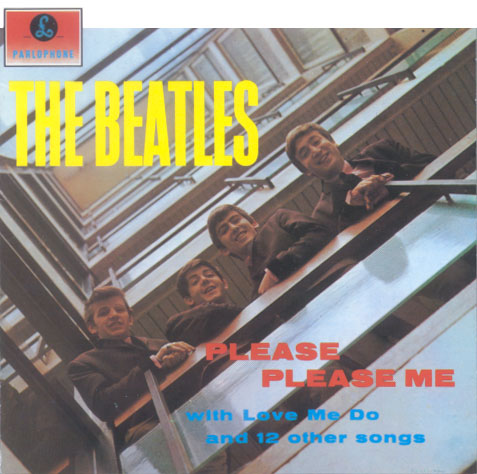 The effect of this tactic made it seem that the first British Beatles album was secondary to what Capitol was bringing American audiences at that time, although the reality was that their first British album "Please Please Me" had outlasted their second album "With The Beatles" at the #1 position on the British charts by staying there 30 as opposed to 21 weeks. The effect of this tactic made it seem that the first British Beatles album was secondary to what Capitol was bringing American audiences at that time, although the reality was that their first British album "Please Please Me" had outlasted their second album "With The Beatles" at the #1 position on the British charts by staying there 30 as opposed to 21 weeks.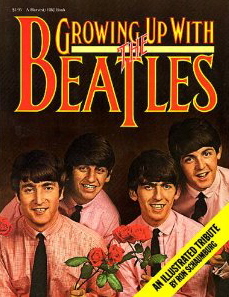 The perceived illegitimacy of these Vee-Jay-released Beatles songs continued in most part throughout the '70s, author Ron Schaumburg referring to these songs as “the terrible twelve” in his 1976 book "Growing Up With The Beatles." Not until the American CD release of the British Beatles albums in 1987 did the overall respect for this early catalog change. The long-lasting effect of the Capitol ruse was substantial. The perceived illegitimacy of these Vee-Jay-released Beatles songs continued in most part throughout the '70s, author Ron Schaumburg referring to these songs as “the terrible twelve” in his 1976 book "Growing Up With The Beatles." Not until the American CD release of the British Beatles albums in 1987 did the overall respect for this early catalog change. The long-lasting effect of the Capitol ruse was substantial.
 "The Beatles' Second Album" back cover
|
The Make-up Of The Album
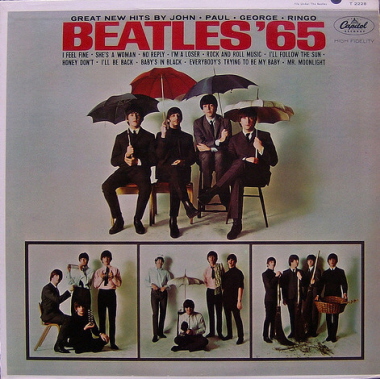 Another financial advantage was discovered by Capitol before the album running order was put together. They decided to limit the usual twelve songs on an American album to eleven. Since American record companies pay a mechanical license fee for each song on an album, eleven songs instead of twelve would reduce costs and therefore increase the money made. They could actually save $20,000 per million copies sold by leaving out one song and, since the album sold a total over two million copies, they saved over $40,000 this way. They also realized that, with “Meet The Beatles!” selling nearly three million copies by the time they were preparing this new album, Beatles fans would buy the album just as readily if there were only eleven songs instead of twelve. With the success of this discovery, most of the US albums released on the Capitol label in the '60s had just eleven songs. Another financial advantage was discovered by Capitol before the album running order was put together. They decided to limit the usual twelve songs on an American album to eleven. Since American record companies pay a mechanical license fee for each song on an album, eleven songs instead of twelve would reduce costs and therefore increase the money made. They could actually save $20,000 per million copies sold by leaving out one song and, since the album sold a total over two million copies, they saved over $40,000 this way. They also realized that, with “Meet The Beatles!” selling nearly three million copies by the time they were preparing this new album, Beatles fans would buy the album just as readily if there were only eleven songs instead of twelve. With the success of this discovery, most of the US albums released on the Capitol label in the '60s had just eleven songs.
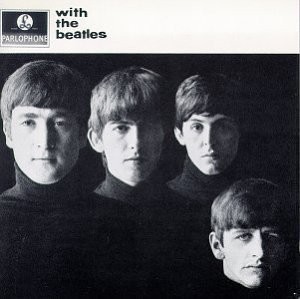 Capitol had previously decided to leave off five of the six ‘cover songs’ from the British “With The Beatles” album for the American “Meet The Beatles!” album since they thought that American R&B songs performed by a British group wouldn’t go over well. With the overwhelming success of The Beatles in the US, Capitol realized that they had been wrong. This led to the availability of five stellar performances which would help to create a high-energy second album. Capitol had previously decided to leave off five of the six ‘cover songs’ from the British “With The Beatles” album for the American “Meet The Beatles!” album since they thought that American R&B songs performed by a British group wouldn’t go over well. With the overwhelming success of The Beatles in the US, Capitol realized that they had been wrong. This led to the availability of five stellar performances which would help to create a high-energy second album.
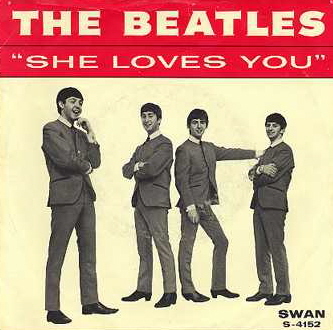 Also available for an album release was the recent number one hit “She Loves You” and its b-side “I’ll Get You.” Although this single was released on Swan Records (first in September of 1963 and then re-released January of 1964), there would be no consequences for Capitol releasing these songs on an album. This was because Swan had been granted only the rights to release the songs as a single. This way Capitol could ‘capitalize’ on the current success of the single, suggesting that “She Loves You” was the hit song on the album. No other single from this album would therefore need to be released to promote it. Just another way Capitol could save money! Also available for an album release was the recent number one hit “She Loves You” and its b-side “I’ll Get You.” Although this single was released on Swan Records (first in September of 1963 and then re-released January of 1964), there would be no consequences for Capitol releasing these songs on an album. This was because Swan had been granted only the rights to release the songs as a single. This way Capitol could ‘capitalize’ on the current success of the single, suggesting that “She Loves You” was the hit song on the album. No other single from this album would therefore need to be released to promote it. Just another way Capitol could save money!
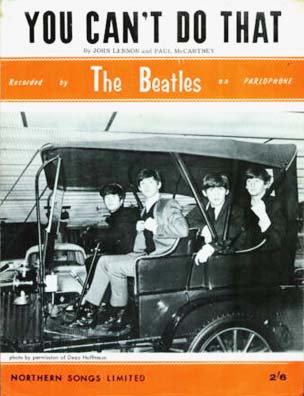 The b-side of their current single “Can’t Buy Me Love” was also included on the album. Because "Can't Buy Me Love" was already slated for inclusion in their upcoming United Artists movie and on the subsequent soundtrack album “A Hard Day’s Night,” this song could not be included on “The Beatles’ Second Album.” But the b-side could! “You Can’t Do That” was another example of Capitol using Beatles’ singles material for album content. The b-side of their current single “Can’t Buy Me Love” was also included on the album. Because "Can't Buy Me Love" was already slated for inclusion in their upcoming United Artists movie and on the subsequent soundtrack album “A Hard Day’s Night,” this song could not be included on “The Beatles’ Second Album.” But the b-side could! “You Can’t Do That” was another example of Capitol using Beatles’ singles material for album content.
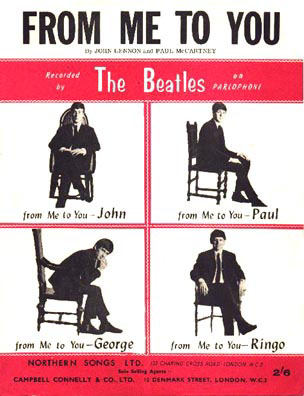 Including the aforementioned “Thank You Girl,” there were still two more songs needed to fill up the eleven tracks for this album. “From Me To You” was not included on the Vee-Jay “Introducing…The Beatles” album and therefore would easily have been a good candidate, although maybe wanting to avoid paying any more royalties to Vee-Jay than they already had to, they either dismissed this idea or never thought of it in the first place. Amazingly enough, Capitol never thought to release this incredibly successful British hit on an album during the ‘60s, even after they earned the rights to their early catalog in late 1964. Because of this fact, I’ve included a full review of this song with this album review to commemorate the album that it would most likely have fit in best with. Including the aforementioned “Thank You Girl,” there were still two more songs needed to fill up the eleven tracks for this album. “From Me To You” was not included on the Vee-Jay “Introducing…The Beatles” album and therefore would easily have been a good candidate, although maybe wanting to avoid paying any more royalties to Vee-Jay than they already had to, they either dismissed this idea or never thought of it in the first place. Amazingly enough, Capitol never thought to release this incredibly successful British hit on an album during the ‘60s, even after they earned the rights to their early catalog in late 1964. Because of this fact, I’ve included a full review of this song with this album review to commemorate the album that it would most likely have fit in best with.
 In order to fill these final two open slots on the album they pulled off a major coup by contacting EMI and requesting two more songs. Since The Beatles and their management were ecstatic about their current US success, they were more than happy to oblige. Two recently recorded tracks, “Long Tall Sally” and “I Call Your Name,” which were recently omitted for inclusion in the upcoming “A Hard Day’s Night” project, were quickly mixed in mono and stereo by George Martin and sent to America to complete the running order of the album. Therefore, American fans got to enjoy these two amazing performances by The Beatles more than two months before British audiences heard them. This was the first of three such occurrences during the Beatles' career. In order to fill these final two open slots on the album they pulled off a major coup by contacting EMI and requesting two more songs. Since The Beatles and their management were ecstatic about their current US success, they were more than happy to oblige. Two recently recorded tracks, “Long Tall Sally” and “I Call Your Name,” which were recently omitted for inclusion in the upcoming “A Hard Day’s Night” project, were quickly mixed in mono and stereo by George Martin and sent to America to complete the running order of the album. Therefore, American fans got to enjoy these two amazing performances by The Beatles more than two months before British audiences heard them. This was the first of three such occurrences during the Beatles' career.
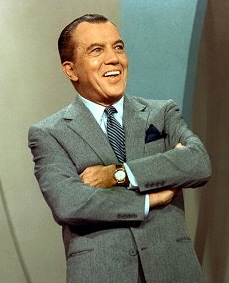 The album cover constructed for this release did not involve either The Beatles or their management, but was put together completely by Capitol. George Osaki designed both the front and back covers using twelve photographs of The Beatles (individually or collectively) of differing sizes arranged in a montage fashion on each side. These pictures, all taken by Joe Covello and licensed through Black Star, include those that are recognizable from their Ed Sullivan Show performances, their Kennedy Airport press conference and their Washington Coliseum concert, all occurring in the US in February of 1964. Under the album’s bold title is the subtitle “ELECTRIFYING BIG-BEAT PERFORMANCES BY ENGLAND’S Paul McCartney, John Lennon, George Harrison and Ringo Starr.” The album cover constructed for this release did not involve either The Beatles or their management, but was put together completely by Capitol. George Osaki designed both the front and back covers using twelve photographs of The Beatles (individually or collectively) of differing sizes arranged in a montage fashion on each side. These pictures, all taken by Joe Covello and licensed through Black Star, include those that are recognizable from their Ed Sullivan Show performances, their Kennedy Airport press conference and their Washington Coliseum concert, all occurring in the US in February of 1964. Under the album’s bold title is the subtitle “ELECTRIFYING BIG-BEAT PERFORMANCES BY ENGLAND’S Paul McCartney, John Lennon, George Harrison and Ringo Starr.”
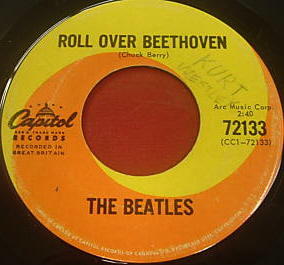 Also printed on the front cover is verbiage for what Capitol considered the most recognizable songs on this album. After mentioning the recent #1 hit “She Loves You,” they highlight “Roll Over Beethoven” which was being heard on US radio since Capitol Of Canada had released the song as a single. This was Capitol’s way of informing American Beatles' enthusiasts that the song was finally available right here in this country. Also printed on the front cover is verbiage for what Capitol considered the most recognizable songs on this album. After mentioning the recent #1 hit “She Loves You,” they highlight “Roll Over Beethoven” which was being heard on US radio since Capitol Of Canada had released the song as a single. This was Capitol’s way of informing American Beatles' enthusiasts that the song was finally available right here in this country.
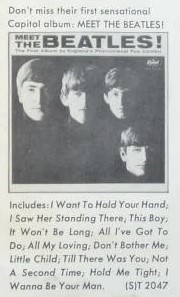 A lengthy bio and/or liner notes were no longer deemed necessary by Capitol, since we had already ‘met’ The Beatles through their first Capitol album. The label did feel it necessary to plug the “Meet The Beatles!” album on the back of this new album, however, in case fans somehow didn’t know it existed. A lengthy bio and/or liner notes were no longer deemed necessary by Capitol, since we had already ‘met’ The Beatles through their first Capitol album. The label did feel it necessary to plug the “Meet The Beatles!” album on the back of this new album, however, in case fans somehow didn’t know it existed.
Recording The Album
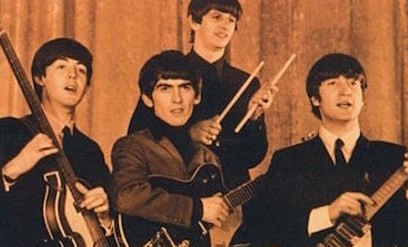 Because of the “leftovers” nature of this Capitol-manufactured album, the recording of these tracks spanned nearly a full year. “Thank You Girl” was recorded on March 5th, 1963 for their third single, and “I Call Your Name” was recorded on March 1st, 1964. Taking a year to record an album today is not unheard of and can actually be referred to as standard practice, but with the fast-paced career The Beatles were swept away into, including their crazy recording schedule, this was a virtual lifetime. Case in point is the recording of the majority of their first British album in one day! Because of the “leftovers” nature of this Capitol-manufactured album, the recording of these tracks spanned nearly a full year. “Thank You Girl” was recorded on March 5th, 1963 for their third single, and “I Call Your Name” was recorded on March 1st, 1964. Taking a year to record an album today is not unheard of and can actually be referred to as standard practice, but with the fast-paced career The Beatles were swept away into, including their crazy recording schedule, this was a virtual lifetime. Case in point is the recording of the majority of their first British album in one day!
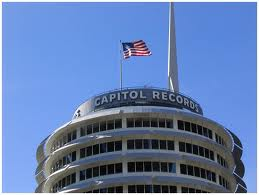 Regarding the recording of this album, one must recognize the involvement of Capitol engineers. For the mono version of "The Beatles' Second Album," Capitol decided to create their own "Type B" mono mixes by combining both channels of the original stereo mixes for a lot of the songs. "She Loves You," "I'll Get You" and "You Can't Do That" did not have official stereo mixes available so Captiol used the EMI mono mixes they had at their fingertips. Since both stereo and mono mixes of "Long Tall Sally" and "I Call Your Name" arrived at Capitol at the last minute, they just went ahead and included the legitimate mono mixes on the mono version of the album as well. As for the stereo version of the album, Capitol decided to add a certain amount of reverb to many songs during the mastering process to help liven up the recordings. The noticeable ‘muddier’ difference is cited by many audiophiles when pinpointing this album as the worst offender of Capitol manipulation. Regarding the recording of this album, one must recognize the involvement of Capitol engineers. For the mono version of "The Beatles' Second Album," Capitol decided to create their own "Type B" mono mixes by combining both channels of the original stereo mixes for a lot of the songs. "She Loves You," "I'll Get You" and "You Can't Do That" did not have official stereo mixes available so Captiol used the EMI mono mixes they had at their fingertips. Since both stereo and mono mixes of "Long Tall Sally" and "I Call Your Name" arrived at Capitol at the last minute, they just went ahead and included the legitimate mono mixes on the mono version of the album as well. As for the stereo version of the album, Capitol decided to add a certain amount of reverb to many songs during the mastering process to help liven up the recordings. The noticeable ‘muddier’ difference is cited by many audiophiles when pinpointing this album as the worst offender of Capitol manipulation.
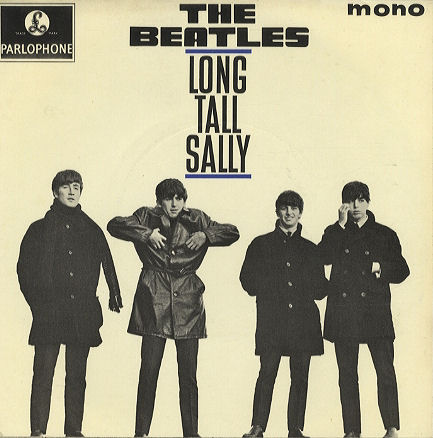 While it can easily be acknowledged that neither The Beatles nor their management had much of anything to do with the formation of this album, US audiences were none the wiser. “The Beatles’ Second Album” ranks very high in the hearts of Beatles enthusiasts to this day. Hearing these recordings in their original context on the UK albums “With The Beatles” and “A Hard Days’ Night,” along with the British EP “Long Tall Sally” and the other assorted singles these tracks come from, do not add up to the running order American fans grew up with. But what a powerhouse running order it is. All rock and roll with no “Till There Was You” or “A Taste Of Honey” to break the mood. The album was, and remains, 26 minutes of sheer energy! While it can easily be acknowledged that neither The Beatles nor their management had much of anything to do with the formation of this album, US audiences were none the wiser. “The Beatles’ Second Album” ranks very high in the hearts of Beatles enthusiasts to this day. Hearing these recordings in their original context on the UK albums “With The Beatles” and “A Hard Days’ Night,” along with the British EP “Long Tall Sally” and the other assorted singles these tracks come from, do not add up to the running order American fans grew up with. But what a powerhouse running order it is. All rock and roll with no “Till There Was You” or “A Taste Of Honey” to break the mood. The album was, and remains, 26 minutes of sheer energy!
Written and compiled by Dave Rybaczewski
CLICK ON THE SONG TITLES BELOW TO READ THE IN-DEPTH HISTORY OF THE SONGS ON "THE BEATLES' SECOND ALBUM"
|
IF YOU WOULD LIKE TO MAKE A DONATION TO KEEP THIS WEBSITE UP AND RUNNING, PLEASE CLICK BELOW!
Sign Up Below for our MONTHLY BEATLES TRIVIA QUIZ!
|